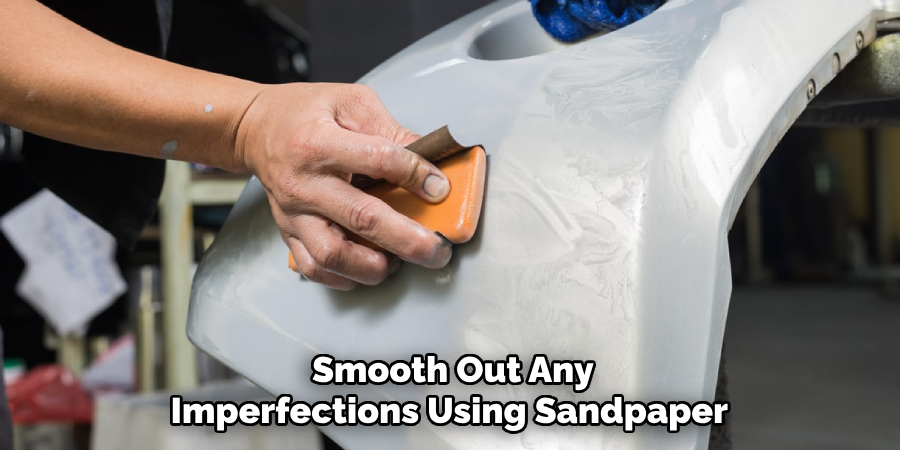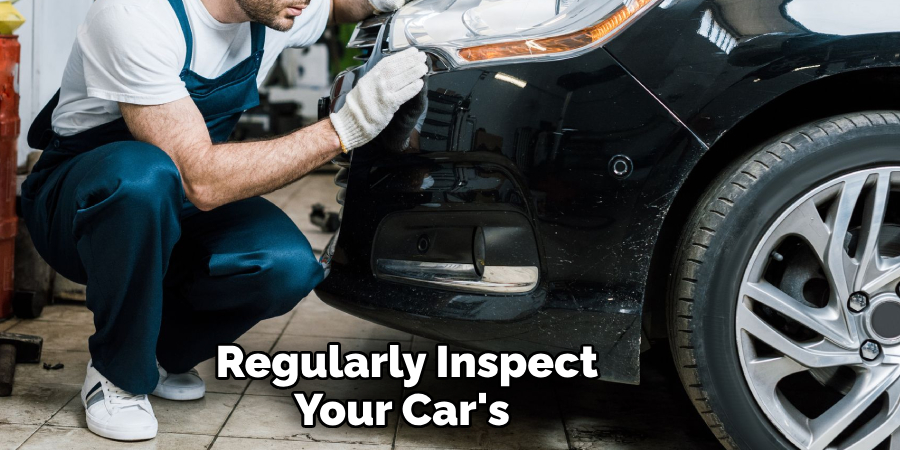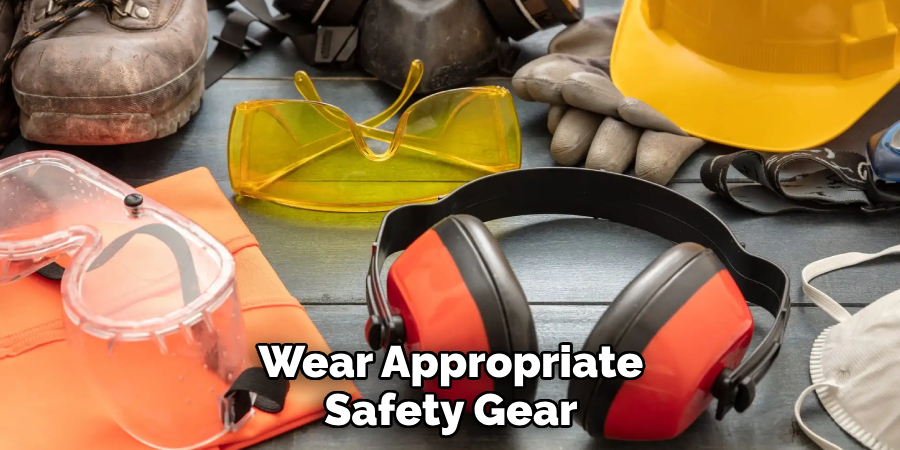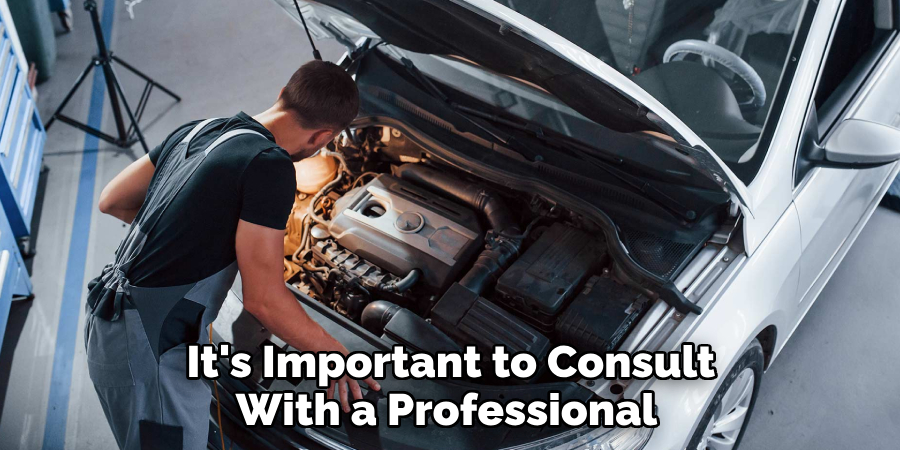Have you recently noticed some frame damage on your car? Don’t panic! Frame damage is a serious issue, but it doesn’t mean that all hope is lost. While fixing frame damage can be expensive and time-consuming, taking the proper steps to ensure it gets repaired correctly will get you back on the road in no time.

In this blog post, we’ll be going over how to fix frame damage on a car, along with some tips for finding a reputable shop and ways to save money while getting the repairs accomplished properly.
Tools and Materials You Will Need to Fix Frame Damage on a Car
- A professional frame straightening machine
- Welding equipment
- Measuring tape and level
- Hammer and dolly set
- Sandpaper and body filler
- Paint and primer
- Protective gear (gloves, safety glasses, and respirator mask)
Step-by-step Guidelines on How to Fix Frame Damage on a Car
Step 1: Assess the Damage
The first step in fixing frame damage is to assess the extent of the damage. Look for any signs of bending, twisting, or crumpling in the frame. Check for cracks and rust as well. It’s important to note that some frame damage may not be easily visible, so it’s best to have a professional inspect your car thoroughly. They will be able to determine if the frame can be straightened or if it needs to be replaced.
Step 2: Straighten the Frame
If your frame is deemed repairable, it will need to be straightened using a professional frame straightening machine. This equipment uses hydraulic pressure and chains to pull and push the frame back into its original shape. It’s a delicate process that requires careful measurements and adjustments. It’s best to leave this step to a certified professional to ensure the frame is straightened correctly.
Step 3: Welding and Reinforcement
After the frame has been straightened, any cracks or weak spots will need to be reinforced with welding. This step is crucial to the structural integrity of your car, so it’s important to have a trained welder perform this task. They will also add support beams and plates if needed for added strength. This step may also involve replacing any damaged suspension or steering components.
Step 4: Sanding, Filling, and Painting
Once the frame has been straightened and reinforced, it’s time to smooth out any imperfections using sandpaper and body filler. This will ensure a seamless finish once the car is painted. After sanding and filling, apply primer followed by the desired color of paint. While it may be tempting to cut corners and skip this step, a proper paint job will protect the repaired frame from future rust and further damage.

Step 5: Aligning and Testing
Lastly, once all repairs are completed, your car’s alignment should be checked to ensure that the wheels are properly aligned. This step is crucial for safe driving and preventing further damage to the frame. A test drive should also be done to ensure that everything is functioning correctly and that there are no issues with steering or suspension.
Following these steps will help you fix frame damage on your car correctly and safely. Remember, it’s always best to leave this type of repair to a professional if you don’t have the necessary training and equipment.
Additional Tips and Tricks to Fix Frame Damage on a Car
1. Inspect the frame damage thoroughly before beginning any repairs. Look for any bent or cracked areas, as well as signs of rust or corrosion.
2. Use a quality body filler to repair any small dents or cracks in the frame. Make sure to follow the manufacturer’s instructions carefully and allow enough time for the filler to properly cure.
3. When welding, make sure to use the proper techniques and equipment. Welding incorrectly can cause more damage to the frame, so it’s best to leave this task to a professional if you are unsure.
4. Consider using a frame straightening machine or hydraulic jack to help realign any bent areas of the frame. This can be a more accurate and effective method than trying to manually bend the frame back into place.
5. Use a rust converter or primer to treat any areas of rust on the frame before painting. This will prevent the rust from spreading and causing further damage.
6. When repainting the frame, make sure to use a high-quality paint that is specifically designed for automotive use. This will ensure that the paint adheres properly and provides long-lasting protection against the elements.
7. It’s important to properly align and adjust the frame after any repairs are made. This will help ensure that the car is safe to drive and doesn’t experience any handling issues.
8. Regularly inspect your car’s frame for any signs of damage or wear. Catching and repairing frame damage early on can prevent more serious issues down the road.
9. If the frame damage is extensive, it may be best to consult a professional auto body shop for repairs. They will have the necessary equipment and expertise to properly fix any major frame damage.
10. Remember, safety should always be your top priority when working on car repairs. Wear protective gear and take precautions to prevent accidents or injuries.

These additional tips and tricks can help you effectively fix frame damage on your car and maintain its structural integrity. By taking the time to properly repair and maintain your car’s frame, you can ensure a safe and reliable vehicle for years to come. So don’t overlook any signs of frame damage and address them promptly with these tips in mind. Happy repairing!
Precautions Need to Be Followed for Fixing Frame Damage on a Car
1. First and foremost, it is crucial to have proper knowledge and experience with fixing frame damage on a car. This process involves intricate work and should not be attempted by someone who is inexperienced or does not have the necessary tools.
2. It is important to inspect the vehicle thoroughly before beginning any repairs. This includes checking for hidden damage, such as bent frame rails or suspension components.
3. Always wear appropriate safety gear, including gloves, goggles, and protective clothing while working on a damaged frame. This will help protect you from any potential hazards.
4. Use proper lifting equipment, such as a hydraulic lift or jack stands, to safely elevate the car for repairs. Do not rely on unstable objects like cinder blocks or wooden blocks.
5. Take photographs before and after the repair process to document the damage and repairs for insurance purposes.
6. Make sure all necessary replacement parts are OEM (Original Equipment Manufacturer) or high-quality aftermarket options. This will ensure proper fitment and functionality of the repaired frame.
7. It is essential to follow manufacturer guidelines and specifications for repairing frame damage. This includes using specific welding techniques and materials.
8. Take your time with the repairs and double-check all measurements and alignments before finalizing any welds or adjustments.

Following these precautions will help ensure a successful and safe repair of frame damage on a car. It is always best to consult with a professional mechanic or body shop for major repairs. Attempting to fix frame damage without the proper knowledge and experience can result in further damage or safety hazards. Safety should always be the top priority when working on any car repairs. So, make sure to follow these precautions and take your time for a successful and safe repair. Happy fixing!
Frequently Asked Questions
What is Frame Damage on a Car?
Frame damage, also known as structural damage, refers to any type of damage that affects the structural integrity of a vehicle’s frame or chassis. This can occur due to accidents, collisions, or other forms of impact.
How Do I Know if My Car Has Frame Damage?
There are several signs that may indicate frame damage on a car. These include unevenly spaced gaps between body panels, misaligned doors or windows, unusual noises while driving, and difficulty opening or closing doors. It’s important to have a professional inspection if you suspect frame damage.
Can Frame Damage Be Repaired?
In most cases, frame damage can be repaired by a trained professional using specialized equipment and techniques. However, the severity of the damage and location may affect the feasibility and cost of repairs. It’s important to consult with a professional for an accurate assessment.

How Much Does it Cost to Repair Frame Damage on a Car?
The cost of repairing frame damage can vary greatly depending on the extent of the damage, the type of vehicle, and labor rates in your area. In some cases, repairs may be covered by insurance if the damage was caused by an accident. It’s best to consult with a professional for an estimate.
Conclusion
Now you know how to fix frame damage on a car and some important facts about it. Remember to always have any suspected damage inspected by a professional to ensure your safety and the longevity of your vehicle. Don’t ignore early signs of frame damage, as it can worsen over time and potentially compromise the structural integrity of your car.
By staying informed and taking prompt action, you can help keep yourself and others safe on the road. So, if you ever encounter frame damage on your car, don’t panic – just seek professional help and trust that it can be repaired. Happy driving!
